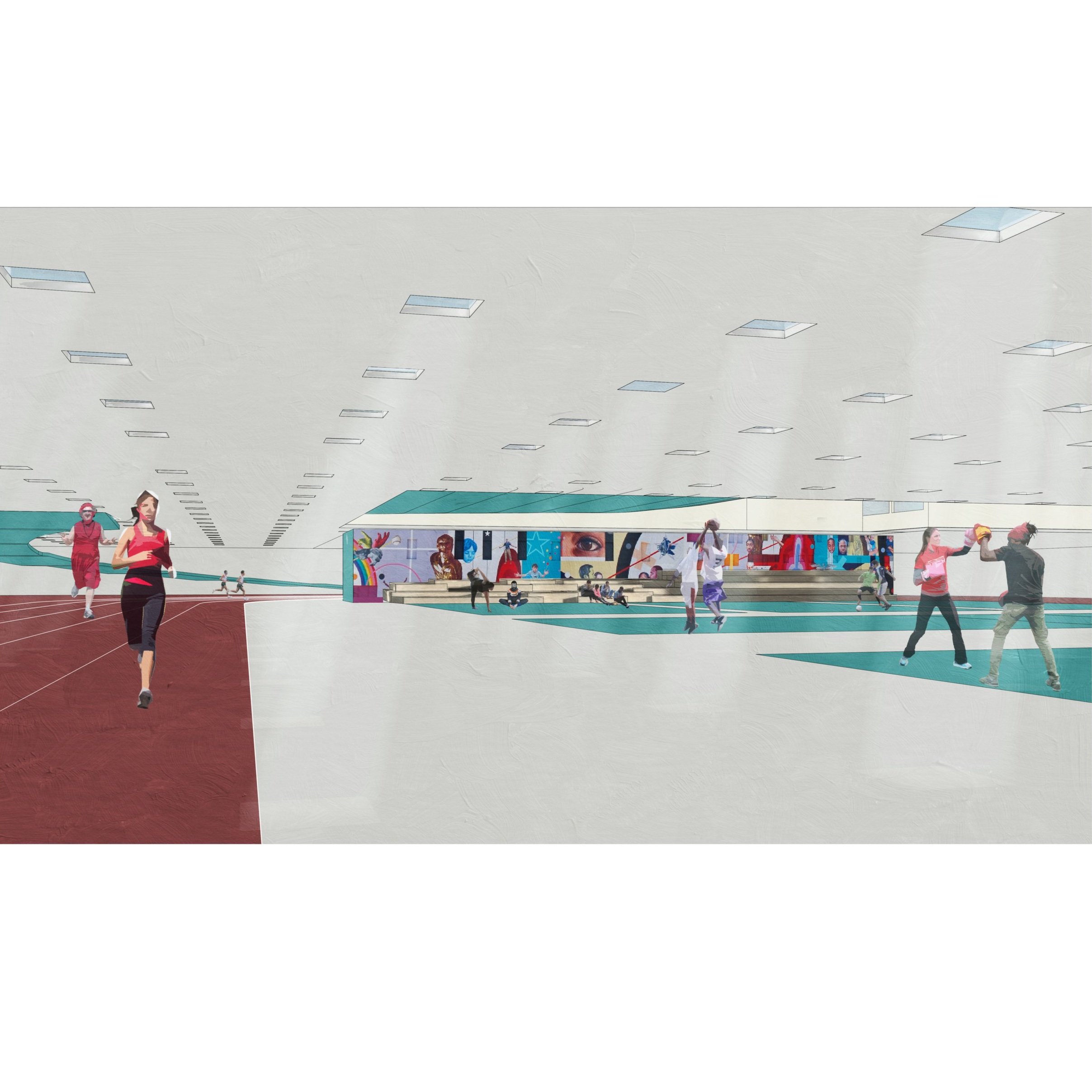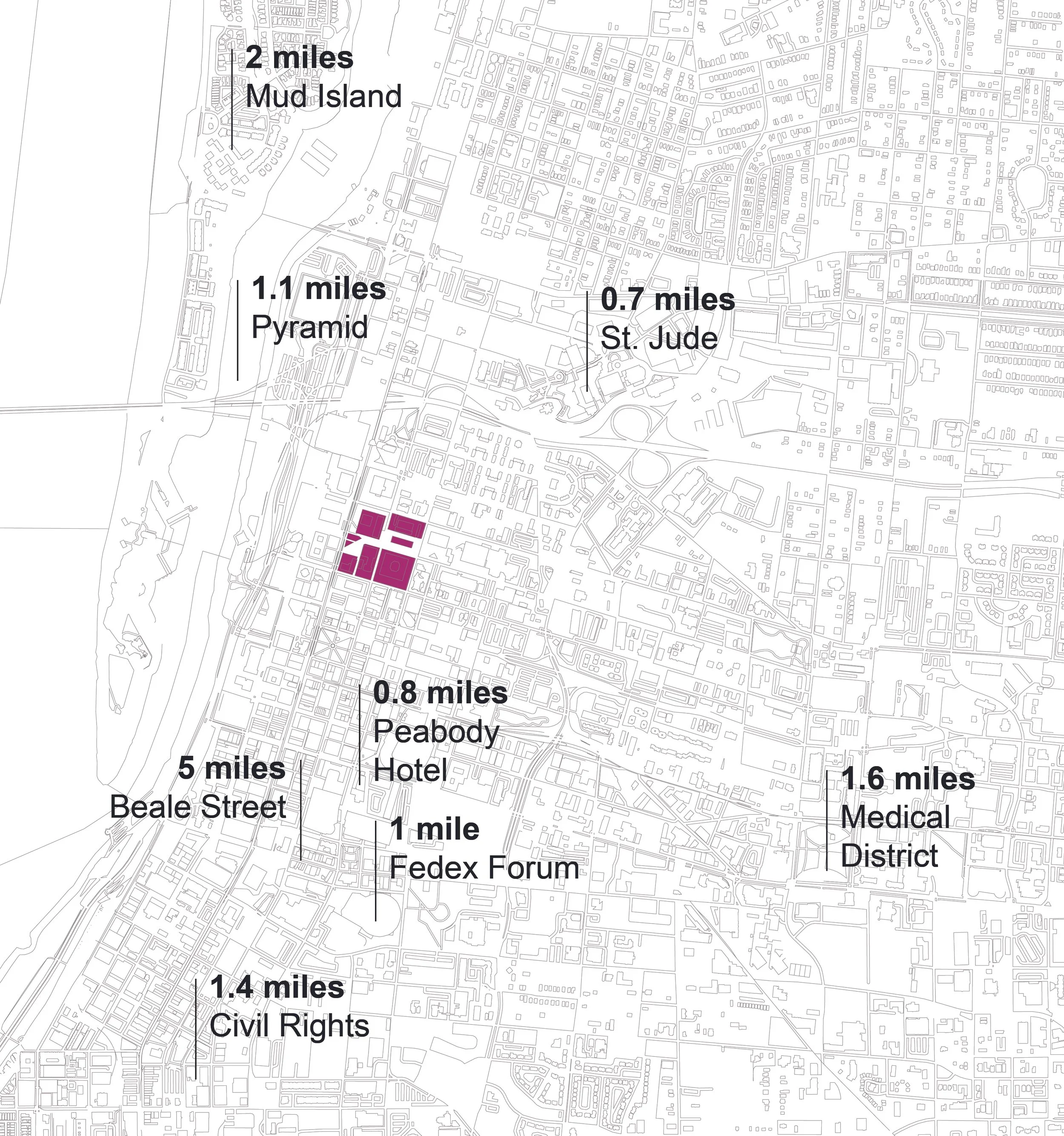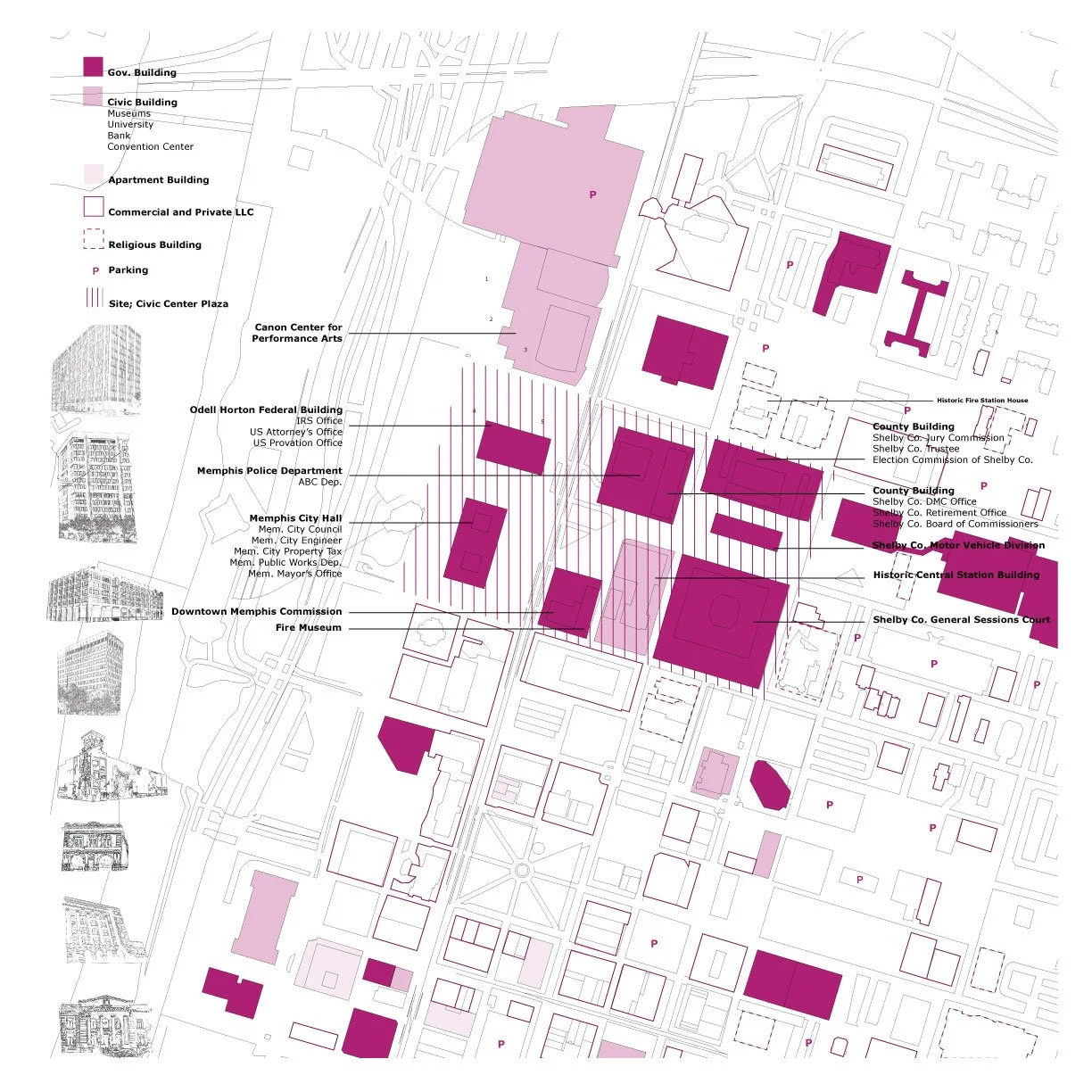
Civic Redefined
2ND YEAR GRADUATE ARCHITECTURE
PROFESSOR: FRANCES HSU
FALL 2024 // IN-PERSON STUDIO // GROUP PROJECT
PERSONAL CONTRIBUTIONS: RESEARCH, IDEATION, DESIGN, 3D BUILD, DRAWINGS
Civic space represents the intersection of leisure and information commons through the multi-dimensional exploration of whatever civic life and engagement can manifest as within a spatial context. However, due to the great disconnect between the government as a system, civil servants, and the public, civic spaces become increasingly fragmented and privatized in order to create a sense of power, control, and hierarchy. This control is, however, only in the hands of the government with no regard to the civilians that use these specific spaces. The intention behind most civic spaces presents an idealistic version of what the American democratic system is supposed to represent: freedom of the public to participate in and have a direct impact on the policies, laws, and representatives of the nations’ government. While the truth about America’s representative democracy can fall within a gray area of how much power and impact the individual actually has, civic space reflects the ugly truths about the public’s relationship with the government. The use of civic space is often monitored and policed to control the public’s freedoms related to their rights to speech and protest. Therefore, the civic space becomes less of a commons for leisure and information sharing and becomes more of a space for control and exclusion. In the age of technology, the media (traditional news sources and social media) has created an unstable bridge between the civic realm and its constituents. Often, the media can present political biases and misinformation that skew the mindset of the public. A supposed bridge between the system and the people becomes yet another layer of fragmentation.
Civic Center Plaza in downtown Memphis is no exception to this commonality in civic space. A plaza that is dedicated to the federal and city civil sector should prioritize the connection between government and public, but, as many examples of civic space already display, the plaza is underutilized, neglected, and extremely controlled. Civic Center Plaza is comprised of seven government buildings on top of a landscaped ground plane. The plaza is a two by two block within the street grid in order to exclude some of the motor vehicle travel, which allowed for spaces to be created for public leisure and gathering. The original design included a small grassy amphitheater, an integrated ground fountain, a Walk of Flags memorial, landscaped walkways, and a plethora of public seating areas. However, the current version of the plaza is devoid of all of these leisurely points of interest. In a space that should be bursting with energy from downtown Memphians using the walkable portion of Main Street that runs through the site, Civic Center Plaza is essentially deserted, save for the occasional government worker on their lunch break.
This analysis begs the question, how can the design of a civic plaza encourage engagement and connection between the civic sector and the public? Through integrating pockets of public space throughout the civic buildings within the plaza and connecting the buildings themselves, this project aims to do just that.



